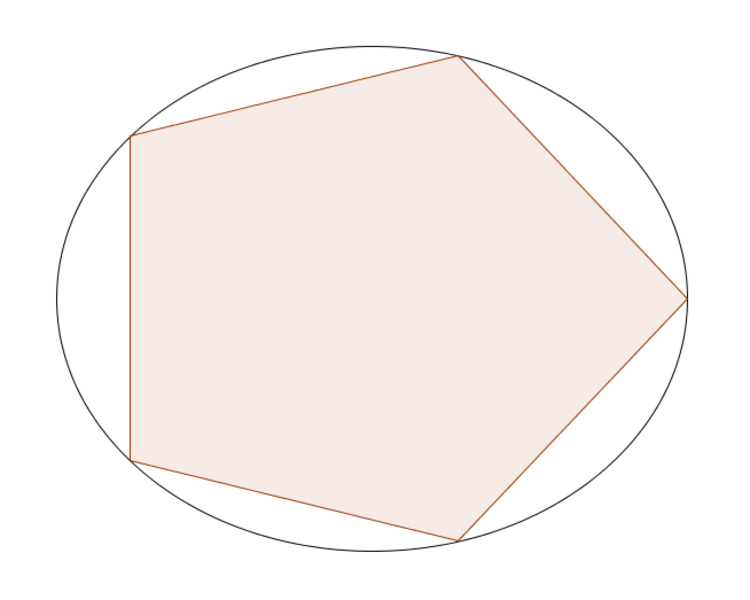Pentallipse
 Construct an ellipse with major axis 3 and minor axis 4. Now arrange 5 points on the ellipse such that the arc length between each pair of consecutive points is equal. What is the area of the pentagon formed by these points? (Image not to scale).
Construct an ellipse with major axis 3 and minor axis 4. Now arrange 5 points on the ellipse such that the arc length between each pair of consecutive points is equal. What is the area of the pentagon formed by these points? (Image not to scale).
The answer is 28.403.
This section requires Javascript.
You are seeing this because something didn't load right. We suggest you, (a) try
refreshing the page, (b) enabling javascript if it is disabled on your browser and,
finally, (c)
loading the
non-javascript version of this page
. We're sorry about the hassle.
The parametric equation of an ellipse is
x ( t ) = a ∗ c o s ( t )
y ( t ) = b ∗ s i n ( t )
The arc length formula between t 1 and t 2 on the ellipse is therefore:
f ( t 1 , t 2 ) = ∫ t 1 t 2 ( − a s i n ( t ) ) 2 + ( b c o s ( t ) ) 2 d t
This is an elliptic integral, so we will use a numerical integrator as well as a binary search to find the angles:
Now use whatever method you like to find the area of the points.